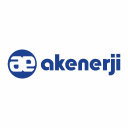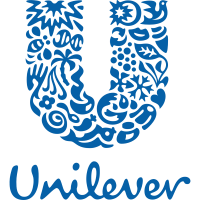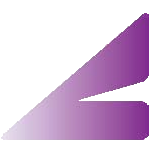
Pan American Silver Corp
TSX:PAAS


| US |

|
Johnson & Johnson
NYSE:JNJ
|
Pharmaceuticals
|
| US |

|
Berkshire Hathaway Inc
NYSE:BRK.A
|
Financial Services
|
| US |

|
Bank of America Corp
NYSE:BAC
|
Banking
|
| US |

|
Mastercard Inc
NYSE:MA
|
Technology
|
| US |

|
UnitedHealth Group Inc
NYSE:UNH
|
Health Care
|
| US |

|
Exxon Mobil Corp
NYSE:XOM
|
Energy
|
| US |

|
Pfizer Inc
NYSE:PFE
|
Pharmaceuticals
|
| US |

|
Palantir Technologies Inc
NYSE:PLTR
|
Technology
|
| US |

|
Nike Inc
NYSE:NKE
|
Textiles, Apparel & Luxury Goods
|
| US |

|
Visa Inc
NYSE:V
|
Technology
|
| CN |

|
Alibaba Group Holding Ltd
NYSE:BABA
|
Retail
|
| US |

|
JPMorgan Chase & Co
NYSE:JPM
|
Banking
|
| US |

|
Coca-Cola Co
NYSE:KO
|
Beverages
|
| US |

|
Walmart Inc
NYSE:WMT
|
Retail
|
| US |

|
Verizon Communications Inc
NYSE:VZ
|
Telecommunication
|
| US |

|
Chevron Corp
NYSE:CVX
|
Energy
|
Utilize notes to systematically review your investment decisions. By reflecting on past outcomes, you can discern effective strategies and identify those that underperformed. This continuous feedback loop enables you to adapt and refine your approach, optimizing for future success.
Each note serves as a learning point, offering insights into your decision-making processes. Over time, you'll accumulate a personalized database of knowledge, enhancing your ability to make informed decisions quickly and effectively.
With a comprehensive record of your investment history at your fingertips, you can compare current opportunities against past experiences. This not only bolsters your confidence but also ensures that each decision is grounded in a well-documented rationale.
Do you really want to delete this note?
This action cannot be undone.

| 52 Week Range |
28.64
69.36
|
| Price Target |
|
We'll email you a reminder when the closing price reaches CAD.
Choose the stock you wish to monitor with a price alert.

|
Johnson & Johnson
NYSE:JNJ
|
US |

|
Berkshire Hathaway Inc
NYSE:BRK.A
|
US |

|
Bank of America Corp
NYSE:BAC
|
US |

|
Mastercard Inc
NYSE:MA
|
US |

|
UnitedHealth Group Inc
NYSE:UNH
|
US |

|
Exxon Mobil Corp
NYSE:XOM
|
US |

|
Pfizer Inc
NYSE:PFE
|
US |

|
Palantir Technologies Inc
NYSE:PLTR
|
US |

|
Nike Inc
NYSE:NKE
|
US |

|
Visa Inc
NYSE:V
|
US |

|
Alibaba Group Holding Ltd
NYSE:BABA
|
CN |

|
JPMorgan Chase & Co
NYSE:JPM
|
US |

|
Coca-Cola Co
NYSE:KO
|
US |

|
Walmart Inc
NYSE:WMT
|
US |

|
Verizon Communications Inc
NYSE:VZ
|
US |

|
Chevron Corp
NYSE:CVX
|
US |
This alert will be permanently deleted.
Pan American Silver Corp
Pan American Silver Corp., founded in 1994, is a prominent player in the global mining industry, specializing in silver production. With its headquarters nestled in Vancouver, British Columbia, the company has etched its mark by expanding operations across Latin America, from Mexico to Bolivia. The firm operates a robust portfolio of mining sites, including some of the richest silver veins in the world. For Pan American Silver, growth isn't just about mining silver—it’s about a strategic approach that balances organic growth with tactical acquisitions, thus diversifying its mineral reserves and enhancing its production capabilities. While silver remains its primary focus, the company has broadened its horizons to include significant gold production, which acts as both a hedge and a revenue enhancer amidst fluctuating silver prices.
Revenue for Pan American Silver primarily flows from the extraction, processing, and sale of silver and other metals. The company meticulously manages the entire process, from geological exploration to mineral extraction, and eventually the refining into market-ready products. It's a capital-intensive operation, relying on advanced technology and skilled labor to efficiently convert mineral deposits into financial returns. By leveraging strategic locations near established mining infrastructure, the company minimizes logistical costs while maximizing output. Additionally, Pan American Silver capitalizes on long-term supply agreements and hedging strategies to navigate the volatile commodity markets, positioning itself as a resilient entity within the traditionally cyclical mining industry. Through this comprehensive approach, the company not only sustains its profitability but also reinforces its commitment to sustainable and responsible mining practices.

Pan American Silver Corp., founded in 1994, is a prominent player in the global mining industry, specializing in silver production. With its headquarters nestled in Vancouver, British Columbia, the company has etched its mark by expanding operations across Latin America, from Mexico to Bolivia. The firm operates a robust portfolio of mining sites, including some of the richest silver veins in the world. For Pan American Silver, growth isn't just about mining silver—it’s about a strategic approach that balances organic growth with tactical acquisitions, thus diversifying its mineral reserves and enhancing its production capabilities. While silver remains its primary focus, the company has broadened its horizons to include significant gold production, which acts as both a hedge and a revenue enhancer amidst fluctuating silver prices.
Revenue for Pan American Silver primarily flows from the extraction, processing, and sale of silver and other metals. The company meticulously manages the entire process, from geological exploration to mineral extraction, and eventually the refining into market-ready products. It's a capital-intensive operation, relying on advanced technology and skilled labor to efficiently convert mineral deposits into financial returns. By leveraging strategic locations near established mining infrastructure, the company minimizes logistical costs while maximizing output. Additionally, Pan American Silver capitalizes on long-term supply agreements and hedging strategies to navigate the volatile commodity markets, positioning itself as a resilient entity within the traditionally cyclical mining industry. Through this comprehensive approach, the company not only sustains its profitability but also reinforces its commitment to sustainable and responsible mining practices.
Record Cash Flow: Pan American Silver achieved record attributable free cash flow of $251.7 million and record operational cash flows of $323.6 million in Q3.
Strong Revenue & EPS: Attributable revenue reached a record $884.4 million; net earnings were $169.2 million ($0.45 per share); adjusted earnings were $181 million ($0.48 per share).
Dividend Increase: The Board raised the dividend to $0.14 per share for Q3, citing strong cash flow generation, even after the MAG Silver acquisition.
MAG Silver Acquisition: Completed acquisition of MAG Silver, with Juanicipio mine's 1-month contribution already reducing costs and improving margins.
Guidance Updates: Attributable silver production guidance was raised to 22–22.5 million ounces; silver segment all-in sustaining cost guidance was lowered to $14.50–$16 per ounce.
Operational Performance: Silver and gold production and costs remained in line with outlook; technical and geotech challenges are being addressed, with confidence in Q4 and 2026 targets.
La Colorada Skarn Project: New phased development approach increases resource potential and reduces upfront capital; advanced partnership discussions underway, with a PEA expected in Q2 2026.
Optimization at Jacobina: Plant and mine optimization projects underway to improve throughput, cost, reliability, and mine life.






































